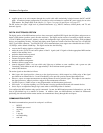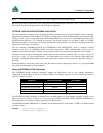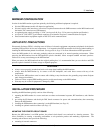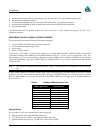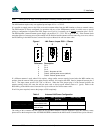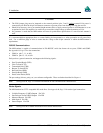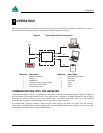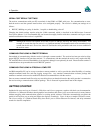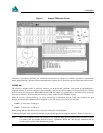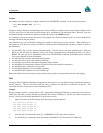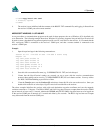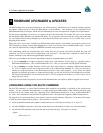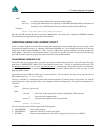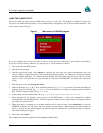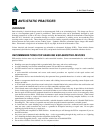
4 Operation
24 MiLLennium GPSCard and Enclosures Guide to Installation & Operation
SERIAL PORT DEFAULT SETTINGS
The receiver communicates with your PC or terminal via the COM1 or COM2 serial port. For communication to occur,
both the receiver and the operator interface have to be configured properly. The receiver’s default port settings are as
follows:
•
RS232C, 9600 bps, no parity, 8 data bits, 1 stop bit, no handshaking, echo off
Changing the default settings requires using the COMn command, which is described in the MiLLennium Command
Descriptions Manual. It is recommended that you become thoroughly familiar with these commands and logs to ensure
maximum utilization of the receiver’s capabilities.
Note: Although the receiver can operate at bit rates as low as 300 bps, this may not always be desirable. For
example, if several data logs are active (i.e. a significant amount of information needs to be transmitted every
second) but the bit rate is set too low, data will overflow the serial port buffers and cause an error condition in
the receiver status.
COMMUNICATING USING A REMOTE TERMINAL
One method of communicating with the receiver is through a remote terminal. The receiver has been pre-wired to allow
proper RS232C interface with your data terminal. To communicate with the terminal the receiver only requires the RX,
TX, and GND lines to be used; handshaking is not required, although it can optionally be used. Ensure that the terminal’s
communications set-up matches the receiver RS232C protocol.
COMMUNICATING USING A PERSONAL COMPUTER
An IBM-compatible PC can be set up to emulate a remote terminal as well as provide the added flexibility of creating
multiple-command batch files and data logging storage files. Any standard communications software package that
emulates a terminal can be used to establish bi-directional communications with the receiver.
One can create command batch files using any text editor; these can then be directed to the serial port that is connected to
the receiver using a communications software package. This is discussed in greater detail later in this chapter.
GETTING STARTED
Included with your receiver are NovAtel’s GPSolution and Convert programs, together with their user documentation.
GPSolution is a Microsoft Windows-based graphical user interface that allows you to access the receiver's many features
without struggling with communications protocol or writing special software. GPSolution automatically recognizes the
model of receiver that you are using and adjusts the displays accordingly. Figure 6 shows a sample GPSolution screen.
The Convert utility is a Windows-based utility that allows you to convert between file formats, and strips unwanted
records for data file compilation.



